New researcher suggests engineered neural networks have the ability to replace and repair lost axonal tracks in the brains of patients with Alzheimer’s disease and those with brain injuries.
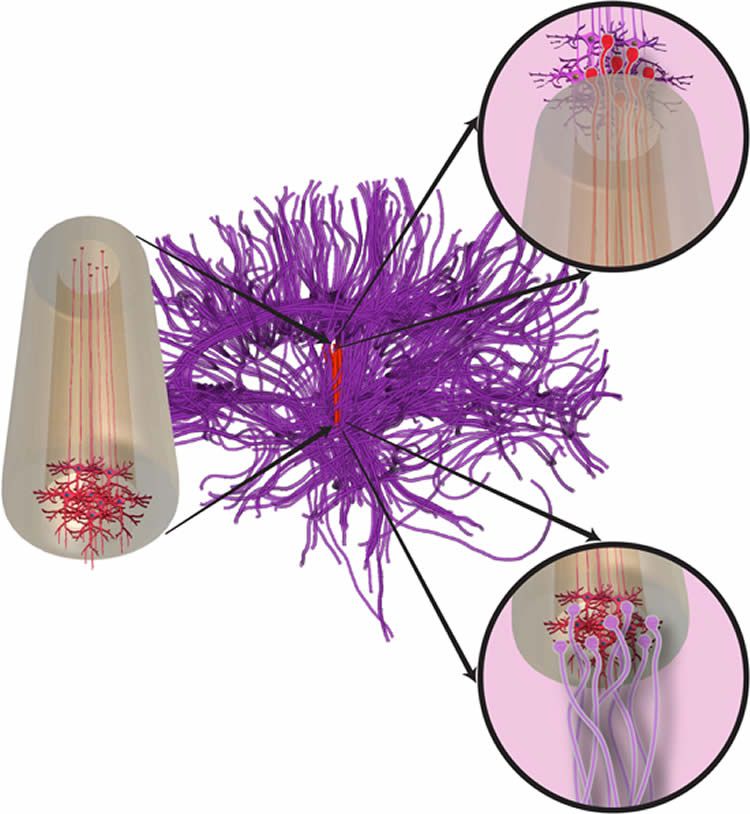

New researcher suggests engineered neural networks have the ability to replace and repair lost axonal tracks in the brains of patients with Alzheimer’s disease and those with brain injuries.
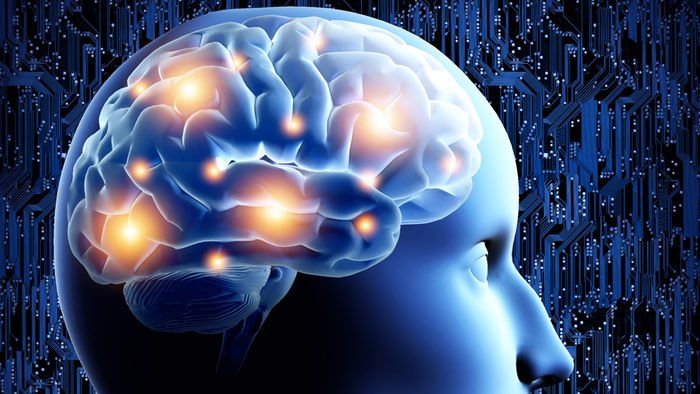
Researchers have identified slow-moving brainwaves they say could be carried only by the brain’s gentle electrical field, a mechanism previously thought to be incapable of spreading neural signals on its own.

Do you look at models and just think that they are the lucky ones who were just born perfect? Well think again! Models are just like us. Sure, they are super-duper attractive and make a lot of money for posing and wearing expensive clothes…but other than that, many fashion models could be our next-door neighbors! Case in point: these 20 Hottest Models Who Live with Chronic Diseases. Many of these people are breaking boundaries and challenging the long-held norms and beliefs that are attached to the modeling industry.
It truly is an inspiration to see these people changing the landscape of who can be a model. We have people here who have debilitating diseases, have overcome mental illnesses, and have accomplished so much for the marginalized groups of people that have just as much right to happiness as average folks. They span the United States, Australia, the United Kingdom and beyond. Their presence and accomplishments range from the past and segue into the future. We can’t wait to see how the modeling scene continues to change.
If you ever thought that you couldn’t be as flawless as a supermodel, think again. The truth is that no one is flawless, and our imperfections and struggles are what make us human!
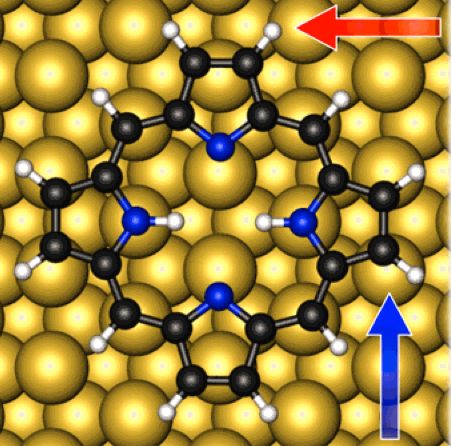
Interesting article about nanoswitches and how this technology enables the self-assembly of molecules. This actually does help progress many efforts such as molecular memory devices, photovoltaics, gas sensors, light emission, etc. However, I see the potential use in nanobot technology as it relates to future alignment mappings with the brain.
Molecular nanoswitch: calculated adsorption geometry of porphine adsorbed at copper bridge site (credit: Moritz Müller et al./J. Chem. Phys.)
Technical University of Munich (TUM) researchers have simulated a self-assembling molecular nanoswitch in a supercomputer study.
As with other current research in bottom-up self-assembly nanoscale techniques, the goal is to further miniaturize electronic devices, overcoming the physical limits of currently used top-down procedures such as photolithography.
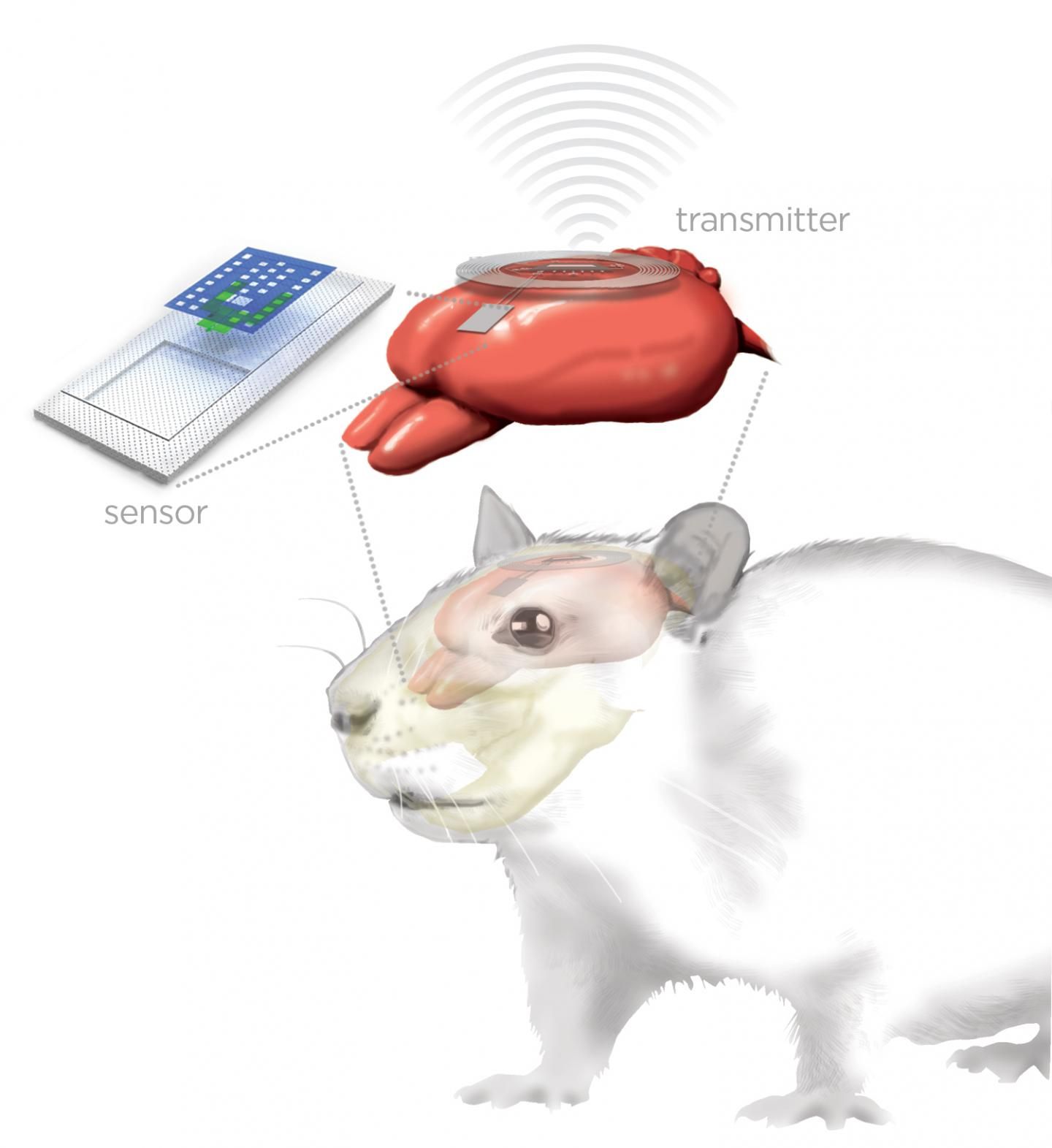
Another interesting find from KurzweilAI.
Artist’s rendering of bioresorbable implanted brain sensor (top left) connected via biodegradable wires to external wireless transmitter (ring, top right) for monitoring a rat’s brain (red) (credit: Graphic by Julie McMahon)
Researchers at University of Illinois at Urbana-Champaign and Washington University School of Medicine in St. Louis have developed a new class of small, thin electronic sensors that can monitor temperature and pressure within the skull — crucial health parameters after a brain injury or surgery — then melt away when they are no longer needed, eliminating the need for additional surgery to remove the monitors and reducing the risk of infection and hemorrhage.
Similar sensors could be adapted for postoperative monitoring in other body systems as well, the researchers say.
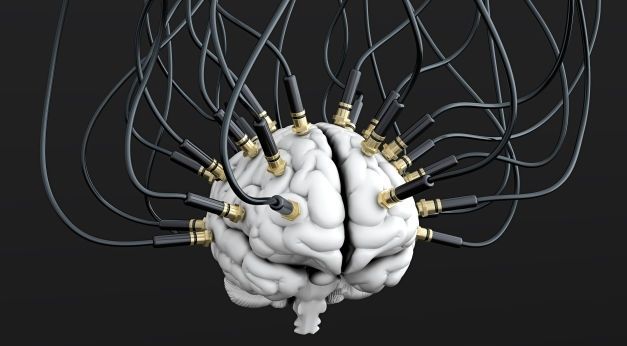
It’s been a weird day for weird science. Not long after researchers claimed victory in performing a head transplant on a monkey, the US military’s blue-sky R&D agency announced a completely insane plan to build a chip that would enable the human brain to communicate directly with computers. What is this weird, surreal future?
It’s all real, believe it or not. Or at least DARPA desperately wants it to be. The first wireless brain-to-computer interface actually popped up a few years ago, and DARPA’s worked on various brain chip projects over the years. But there are shortcomings to existing technology: According to today’s announcement, current brain-computer interfaces are akin to “two supercomputers trying to talk to each other using an old 300-baud modem.” They just aren’t fast enough for truly transformative neurological applications, like restoring vision to a blind person. This would ostensibly involve connect a camera that can transmit visual information directly to the brain, and the implant would translate the data into neural language.
To accomplish this magnificent feat, DARPA is launching a new program called Neural Engineering System Design (NESD) that stands to squeeze some characteristically bonkers innovation out of the science community. In a press release, the agency describes what’s undoubtedly the closest thing to a Johnny Mneumonic plot-line you’ve ever seen in real life. It reads:
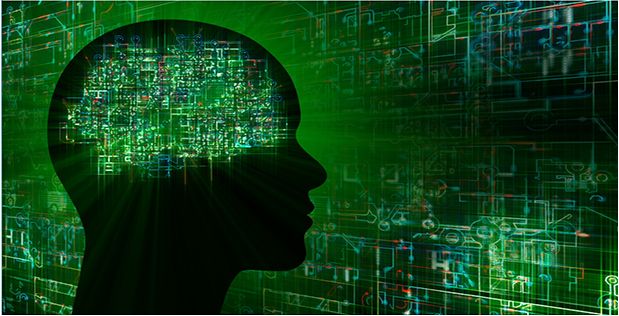
A new DARPA program aims to develop an implantable neural interface able to provide unprecedented signal resolution and data-transfer bandwidth between the human brain and the digital world. The interface would serve as a translator, converting between the electrochemical language used by neurons in the brain and the ones and zeros that constitute the language of information technology. The goal is to achieve this communications link in a biocompatible device no larger than one cubic centimeter in size, roughly the volume of two nickels stacked back to back.
The program, Neural Engineering System Design (NESD), stands to dramatically enhance research capabilities in neurotechnology and provide a foundation for new therapies.
“Today’s best brain-computer interface systems are like two supercomputers trying to talk to each other using an old 300-baud modem,” said Phillip Alvelda, the NESD program manager. “Imagine what will become possible when we upgrade our tools to really open the channel between the human brain and modern electronics.”

You may not realise it when your alarm clock forces you into a bleary-eyed stupor first thing in the morning, but there’s actually a complex chemical process going on inside your brain as you wake up. And scientists now think they’ve identified the part of the brain that ends periods of light sleep and brings us into a state of wakefulness.
Researchers from Switzerland focussed their attention on a specific neural circuit located between the brain’s hypothalamus and thalamus. By stimulating this circuit with pulses of light in a group of mice, the academics could prompt rapid awakenings from sleep and then cause prolonged wakefulness.
Why should we be excited about knowing more about how we get yanked out of our regular sleep patterns? The researchers say it could ultimately help those who are trapped in a long-term coma or vegetative state, and on the flip side, could also help those with sleep disorders, or at least give doctors a better idea of why they aren’t sleeping correctly.

https://youtube.com/watch?v=ZwSwZ2Y0Ops
Here are 18 predictions that finally came true in 2015, from an actual working hoverboard to cyborgised brains.

It’s leading to a different way of thinking about computing.
This year’s Detroit auto show is proving that autonomous driving is no longer a techie’s pipe dream. Even holdout Akio Toyoda has finally joined the parade. The self-driving car is coming.
But behind that development is an even more profound change: artificial intelligence (also known as “deep learning”) has gone mainstream. The autonomous driving craze is just the most visible manifestation of the fact that computers now have the capacity to look, learn and react to complex situations as well or better than humans. It’s leading to a profoundly different way of thinking about computing. Instead of writing millions of lines of code to anticipate every situation, these new applications ingest vast amounts of data, recognize patterns, and “learn” from them, much as the human brain does.